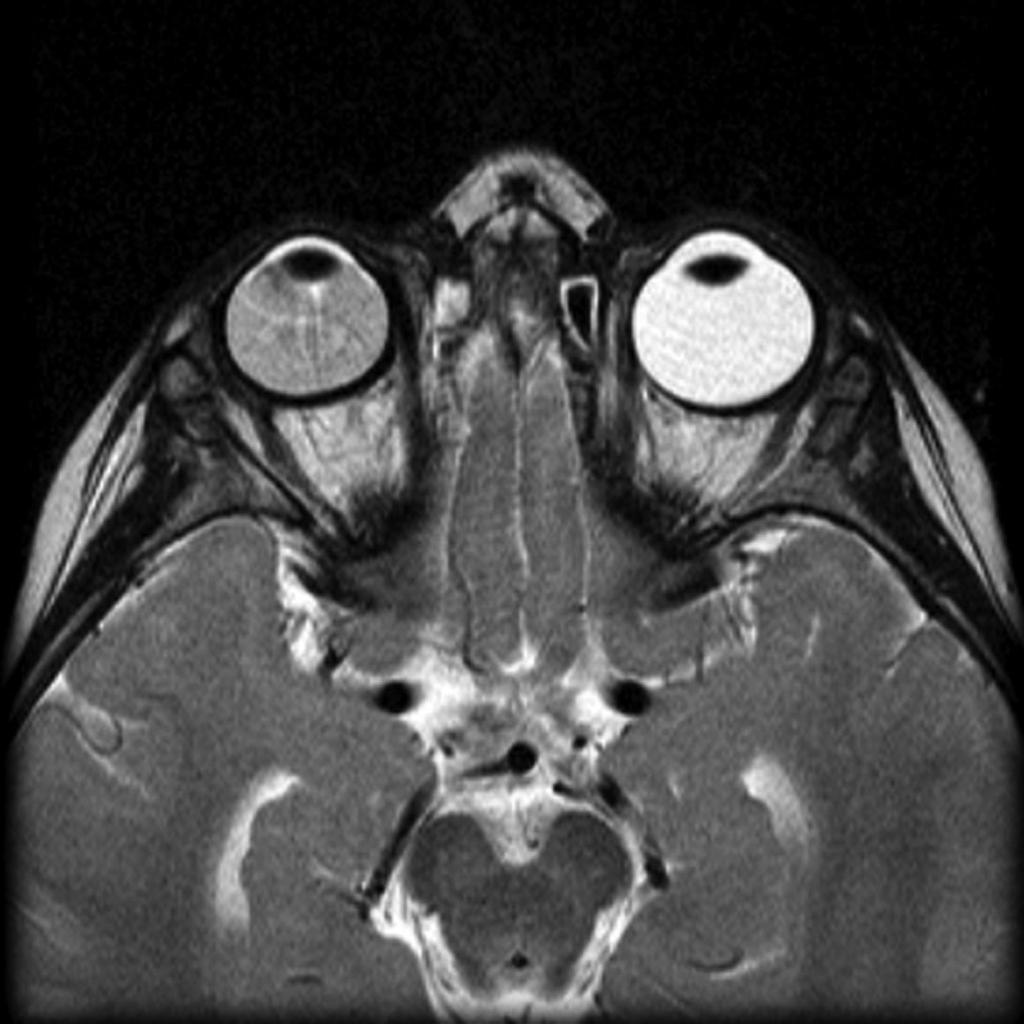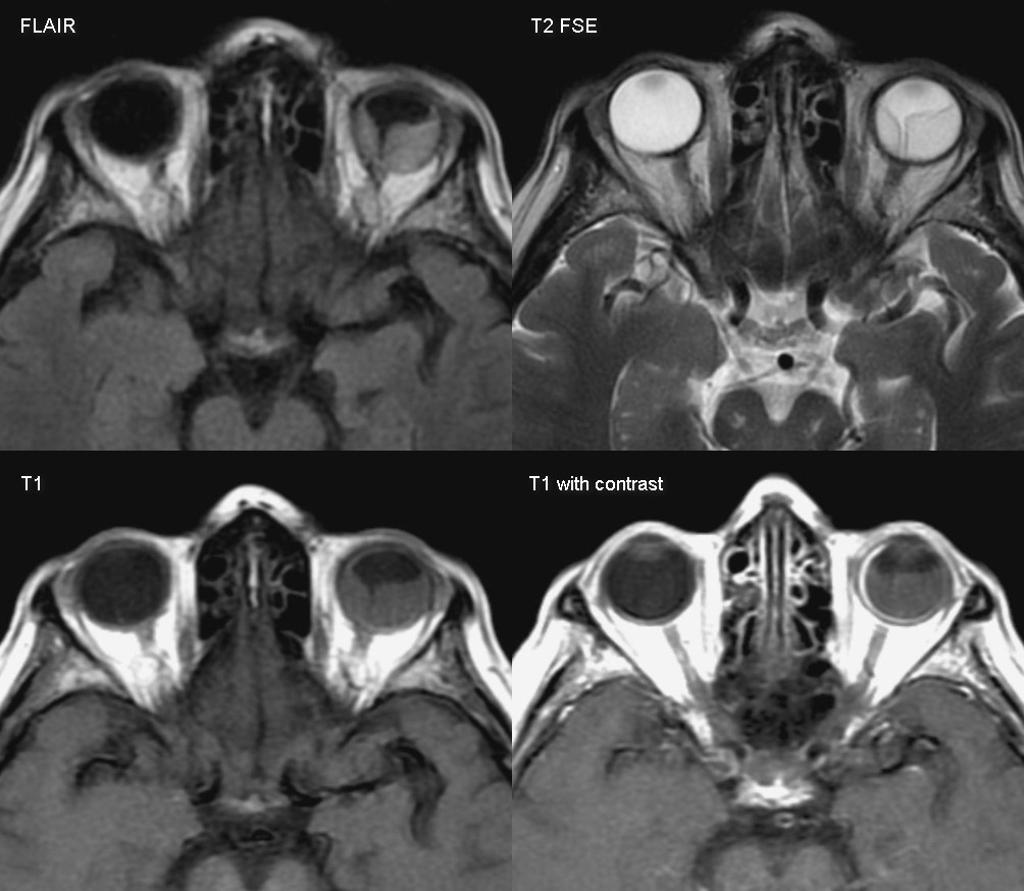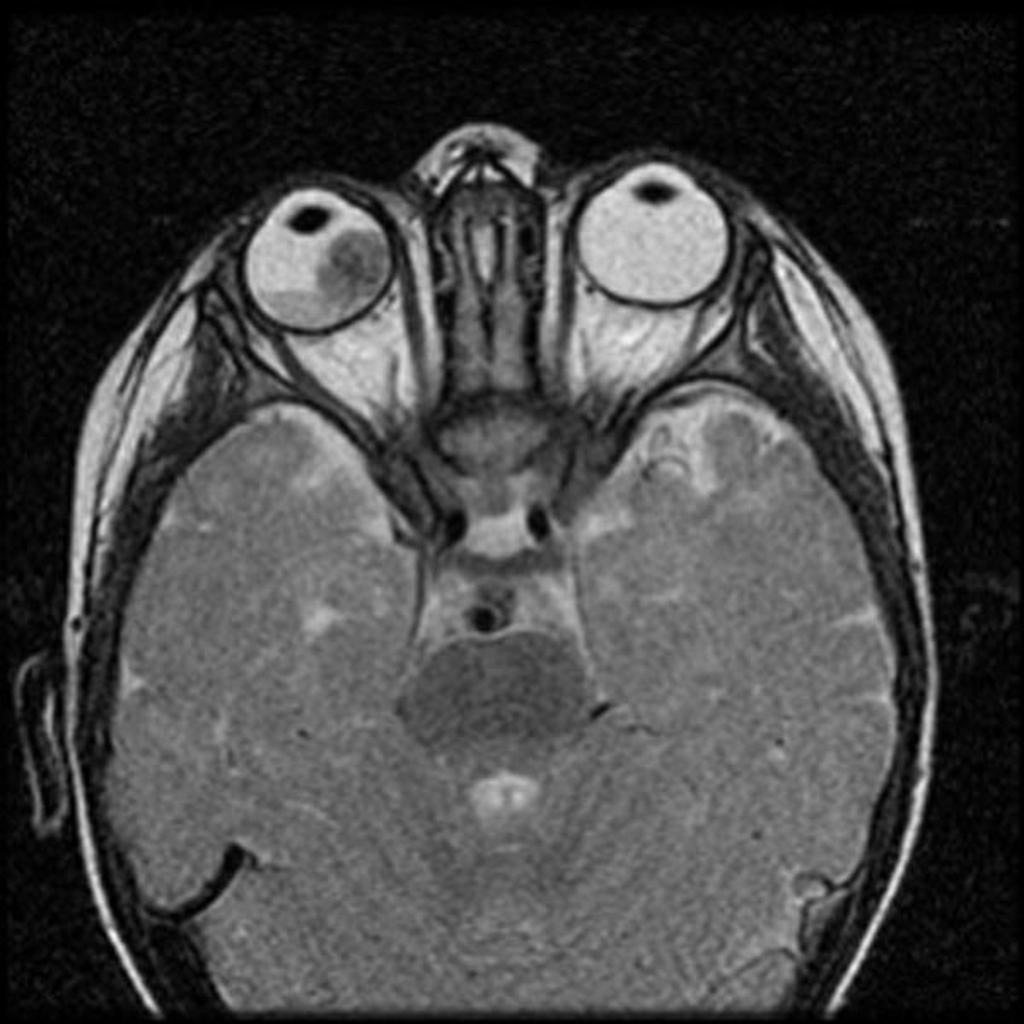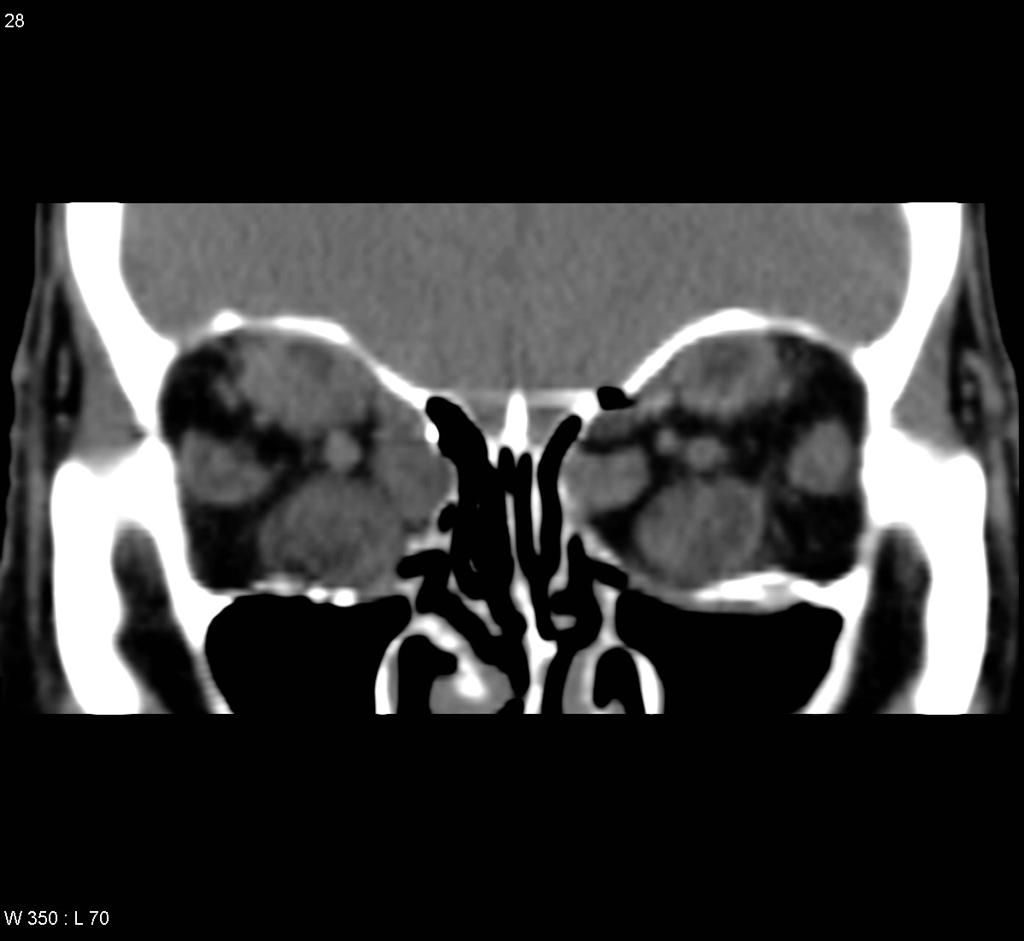Retinoblastoma differential diagnosis

Editor-In-Chief: C. Michael Gibson, M.S., M.D. [1]; Associate Editor(s)-in-Chief: Sahar Memar Montazerin, M.D.[2] Simrat Sarai, M.D. [3]
Overview
Retinoblastoma must be differentiated from other diseases that cause leukocoria. leukocoria may occur in several ocular conditions including tumors, vascular disease, inflammatory disorders, and also due to trauma.
Differential diagnosis
Retinoblastoma must be differentiated from other diseases that cause leukocoria. Differential diagnosis of leukocoria in children include:
| Leukocoria | |||||||||||||||||||||||||||||||||||||||||||||||||||||||
| Tumors | Congenital malformations | Vascular diseases | Inflammatory diseases | Trauma | |||||||||||||||||||||||||||||||||||||||||||||||||||
| Retinoblastoma Medulloepithelioma Leukemia Combined retinal hamartoma Astrocytic hamartoma (Bourneville’s tuberous sclerosis) | Persistent fetal vasculature (PFV) Posterior coloboma Retinal fold Myelinated nerve fibers Morning glory syndrome Retinal dysplasia Norrie’s disease Incontinentia pigmenti Cataract | Retinopathy of prematurity (ROP) Coats’ disease Familial exudative vitreoretinopathy (FEVR) | Ocular toxocariasis Congenital toxoplasmosis Congenital cytomegalovirus retinitis Herpes simplex retinitis Other types of fetal iridochoroiditis Endophthalmitis | Intraocular foreign body Vitreous hemorrhage Retinal detachment | |||||||||||||||||||||||||||||||||||||||||||||||||||
| The above algorithm adopted from Clinical Ophthalmic Oncology book [1] |
|---|
Differential diagnosis of leukocoria
| Disease/Condition | Clinical presentation | Demographics/History | Diagnosis | Other notes |
|---|---|---|---|---|
| Retinoblastoma[2][3] |
|
|
| |
| Coats'disease[4][5] |
|
|
|
|
| Persistent fetal vasculature (formerly known as persistent hyperplastic primary vitreous)[5] |
|
|
|
|
| Astrocytic hamartoma[1] |
|
|
|
|
| Retinopathy of prematurity (ROP)[1] |
|
|
|
|
| Ocular toxocariasis [1] |
|
|
| |
| Familial Exudative Vitreoretinopathy (FEVR)[6] |
|
|
|
|
| Norrie’s Disease[1][7] |
|
|
|
- |
| Coloboma[1] |
|
|
|
 |
 |
 |
 |
|---|
References
- ↑ 1.0 1.1 1.2 1.3 1.4 1.5 Singh, Arun (2015). Clinical ophthalmic oncology : retinoblastoma. Heidelberg: Springer. ISBN 978-3-662-43451-2.
- ↑ Butros LJ, Abramson DH, Dunkel IJ (March 2002). "Delayed diagnosis of retinoblastoma: analysis of degree, cause, and potential consequences". Pediatrics. 109 (3): E45. PMID 11875173.
- ↑ Sachdeva R, Schoenfield L, Marcotty A, Singh AD (June 2011). "Retinoblastoma with autoinfarction presenting as orbital cellulitis". J AAPOS. 15 (3): 302–4. doi:10.1016/j.jaapos.2011.02.013. PMID 21680213.
- ↑ Silva RA, Dubovy SR, Fernandes CE, Hess DJ, Murray TG (December 2011). "Retinoblastoma with Coats' response". Ophthalmic Surg Lasers Imaging. 42 Online: e139–43. doi:10.3928/15428877-20111208-04. PMID 22165951.
- ↑ 5.0 5.1 Gupta N, Beri S, D'souza P (June 2009). "Cholesterolosis Bulbi of the Anterior Chamber in Coats Disease". J Pediatr Ophthalmol Strabismus. doi:10.3928/01913913-20090616-04. PMID 19645389.
- ↑ Gerstenblith, Adam (2012). The Wills eye manual : office and emergency room diagnosis and treatment of eye disease. Philadelphia: Wolters Kluwer/Lippincott Williams & Wilkins. ISBN 978-1451109382.
- ↑ Howard GM, Ellsworth RM (October 1965). "Differential diagnosis of retinoblastoma. A statistical survey of 500 children. I. Relative frequency of the lesions which simulate retinoblastoma". Am. J. Ophthalmol. 60 (4): 610–8. PMID 5897773.